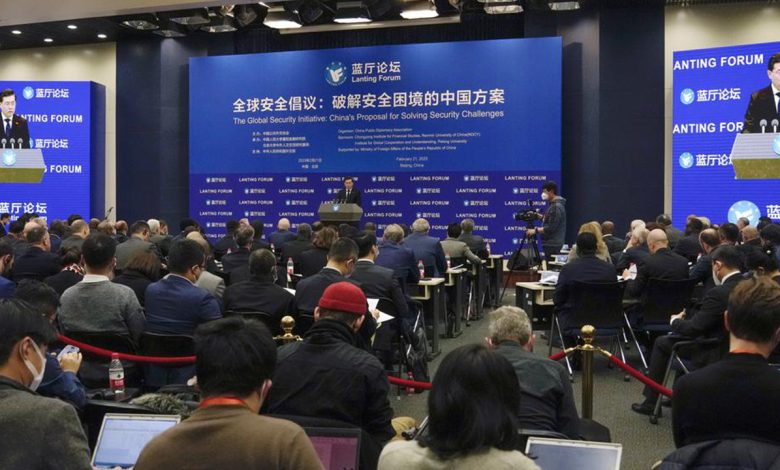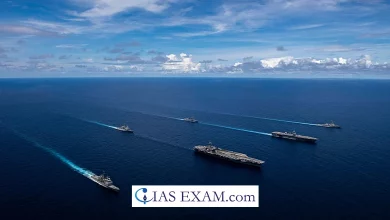An Objective Look at a China-led Framework
[GS Paper 2 - International Organizations, Global groupings]

Context– The Chinese foreign minister Qin Gang recently at the Lanting forum, Beijing, highlighted the recent Global security initiative (GSI). The china-led framework aims to restore stability and security in the Asian region.
What is GSI?
- The Global Security Initiative is an Asian security framework i.e a Chinese model to counter western grouping led by U.S like the QUAD (India, U.S, Australia, Japan) and other dominant U.S led concepts like the Indo- pacific strategy.
- It is envisaged on the principle of indivisible security i.e. no country can strengthen its own security at the expense of the security of other nations.
- With the Russia – Ukraine war issues , changing geopolitics in the international system and diverging perceptions among the developing countries towards the west. The GSI aims to leverage China’s position among the ongoing tensions as a new alternate global leader.
Five major pillars of the GSI
- Mutual respect
- Openness and inclusion
- Multilateralism
- Mutual benefit
- Holistic approach
Problems with the China led model (GSI)
- China’s track records of its external engagements are vastly different from its vision of a future security order.
- The crux of the GSI’s principle centers on the countries to adhere to the United Nations charter and International law facilitating relations based on the above five pillars. However, China has always demonstrated activities completely opposite to its principles in regard to its relations with its neighbors and other countries.
- Disregard over mutual respect– China has always disregarded the territorial integrity and sovereignty of India. It has always been provocative by unilaterally disregarding confidence building measures and bilateral agreements.
- China assertive actions in the south china sea disregards sovereign rights of its South Asian neighbors and it completely rejects the United Nations Convention On the Law of seas, (UNCLOS). China intrudes and blocks access to the respective exclusive economic zones of its neighbors.
- China’s exclusionary policies in the east and south china seas are a dent on its ideal of openness and inclusiveness
- China shares asymmetric power relations in various multilateral institutions, constraining members of the ASEAN (Association of South East Asian Nations) from pursuing collective action against Beijing. China uses grey zone strategies and has been using military power in the South China Sea.
- China’s debt trap diplomacy has failed the mutual benefit idea. The Belt road initiative (BRI) and alternative institutions like Asian infrastructure investment bank (AIIB) and contingency reserve agreement (CRA) of the New development bank of China has provided infrastructural benefits to developing countries but disregarded their macroeconomic stability.
- The unsustainable projects for low or non existing credit ratings of countries have thereby created a debt burden. For example China’s claim over a larger share on the joint exploration of resources with Manila in Philippine waters.
The holistic approach of China to eliminate “breeding ground for insecurity” has been misleading ever since. The rise of China has led to power competitions (India, U.S) in the multipolar international system.
Conclusion
China’s GSI is far from being sustainable, equitable and transparent to the growing global insecurity. Rather one can objectively conclude that the GSI is a mere attempt of Beijing to counter the U.S leadership. It basically aims to oppose unilateral sanctions, particularly the western sanctions headed by the U.S.





.png)



